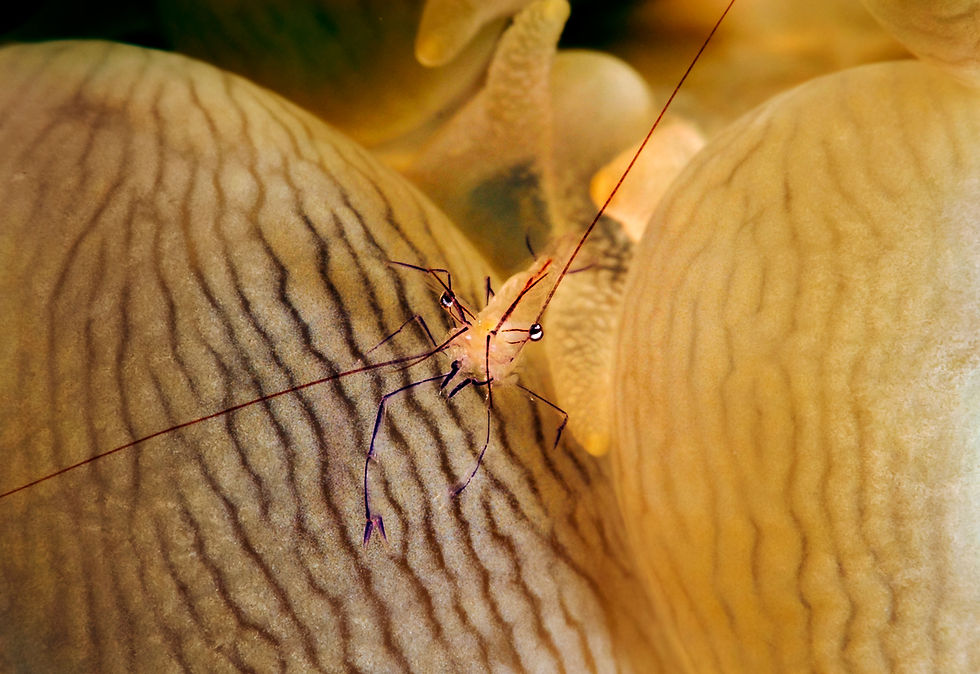
Photos - Critters Part 3
Preview

A commensal shrimp takes up residence inside a sea squirt.

A snapping shrimp has made a sea squirt its home. The sea squirt has been illuminated by shining a dive light through the sea squirt's side wall.

A commensal shrimp peeks out of a sea squirt to look at the divers.

Another shrimp from a bit farther away.

Sea squirt - or ascidian - are animals with one end of the body fixed to rock, coral, or other solid surface.





Likely a juvenile Shortfin Lionfish.

Lionfish belongs to the scorpionfish family. It is native to Indo-Pacific. Lionfish have become invasive species in Florida and Caribbean, where they have no natural predators destroying up to 80% of existing fish species in a few weeks.

Scorpionfish do not attack divers, but their venomous spines can be lethal if you are not careful where you slam your hands.

While some scorpionfishes disguise themselves, some sport vivid colours.

Scorpionfish have venomous spines on their dorsal fins.

Moray eels are shy creatures. They hide in crevices or bury themselves tail first into the sand.


Moray eels do not attack divers unless provoked or by accident. Scuba divers have lost fingers while hand-feeding moray eels. Moray eels have poor eye sight and they rely on their sense of smell, which may make distinguishing between food and diver's fingers difficult.

Moray eels have rear-hooked teeth. The grip is difficult to release even if the eel is dead.


Garden eels usually live in burrows on the sea floor. They tend to live in groups, and eel heads "growing" from the sea floor resemble plants in a garden. They vary greatly in color depending on the species involved.

Bubble Coral Shrimp



Crinoid Shrimp




Candy crab.

Fairy Crab on a sponge.


Most stingrays have one or more barbed stingers on the tail, which are used exclusively in self-defense.




Goby peeking out of its hole. Gobies usually live in symbiosis with shrimps: the shrimp digs a whole, keeps cleaning and perfoming other household duties. The goby keeps guard and if threatened, they both quickly retract into the hole.
